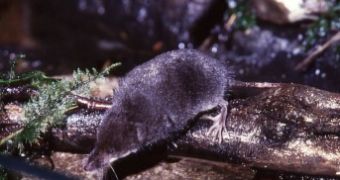Shrews have always been considered an ancestral model of mammals, the model of how primitive mammals must have looked during the dinosaur era. But a new research made on water shrews and published in the "Proceedings of the National Academy of Sciences" reveals highly sophisticated methods for hunting underwater small fish and aquatic insects even in total darkness.
Being so small (half the size of a house mouse), water shrews lose a lot of heat and their high metabolism means they have to eat continuously.
"Water shrews do much of their hunting at night so I began wondering how they can identify their prey in nearly total darkness. Our research confirms that shrews in general, and water shrews in particular, are marvels of adaptation, with specializations and behaviors that put many other mammals to shame," said lead researcher Ken Catania, associate professor of biological sciences at the University of Manitoba.
A high-speed camera recorded the water shrew's lightning-fast reflexes: an attack takes 0.02 second following the detection of the prey and a bite 0.05 second. To see the shrews hunting in the dark, the team used infrared light, which cannot be detected by the shrews (nor by humans).
The shrews detected prey based on water movements provoked when animals attempted to swim away; using their whiskers and underwater olfaction through air bubbles expelled out of their nose and then re-inhaled.
"This combination of methods poses a serious conundrum for prey. If they freeze, they risk detection from touch or olfaction. But, if they try to swim away, they generate water currents that can reveal their location," said Catania.
Audible and ultrasonic records showed that the shrews did not use sonar, echolocation or electrical sensitivity (electroreception) to detect their prey. To see how shrews responded to water currents, the team used a small glass-bottomed aquarium with small water jets. The shrews repeatedly gushed to brief, sudden water movements mimicking disturbances provoked by the escaping prey.
To see how shape influences the shrews, the team tested the animals with fish-shaped silicon objects, but also similarly sized rectangular and cylindrical objects of the same material. The shrews ignored the geometric shaped objects, but bit the fish-shaped objects after touching them with their whiskers. Motion also provoked attacks, even when the moving objects did not have the fish shape.
"One of the difficulties in doing these experiments was that it doesn't take the shrews long to figure out that our targets are not real fish. You can only fool them a few times," said Catania.

 14 DAY TRIAL //
14 DAY TRIAL //